Contents
- 1 Why a Vertical Spinach Garden Wall Is Perfect for Your Kitchen
- 2 Choosing the Right Kit to Get Started
- 3 Setting Up Your Vertical Spinach Garden Wall
- 4 Planting Your Spinach for Success
- 5 Caring for Your Vertical Spinach Garden
- 6 Harvesting and Enjoying Your Spinach
- 7 Purchase Your Vertical Planter Today
- 8 Frequently Asked Questions (FAQs)
- 9 Author
Key Takeaways
-
Indoor vertical spinach gardening is a space-efficient way to grow fresh greens in your kitchen.
-
Choosing the right vertical gardening kit is crucial for success; look for ease of assembly and optimal growing conditions.
-
Spinach thrives in well-lit areas, so finding the right spot in your kitchen is key.
-
Proper planting, watering, and nutrient management are essential for a bountiful spinach harvest.
-
Harvesting your spinach at the right time ensures peak freshness and flavor for your dishes.
Why a Vertical Spinach Garden Wall Is Perfect for Your Kitchen
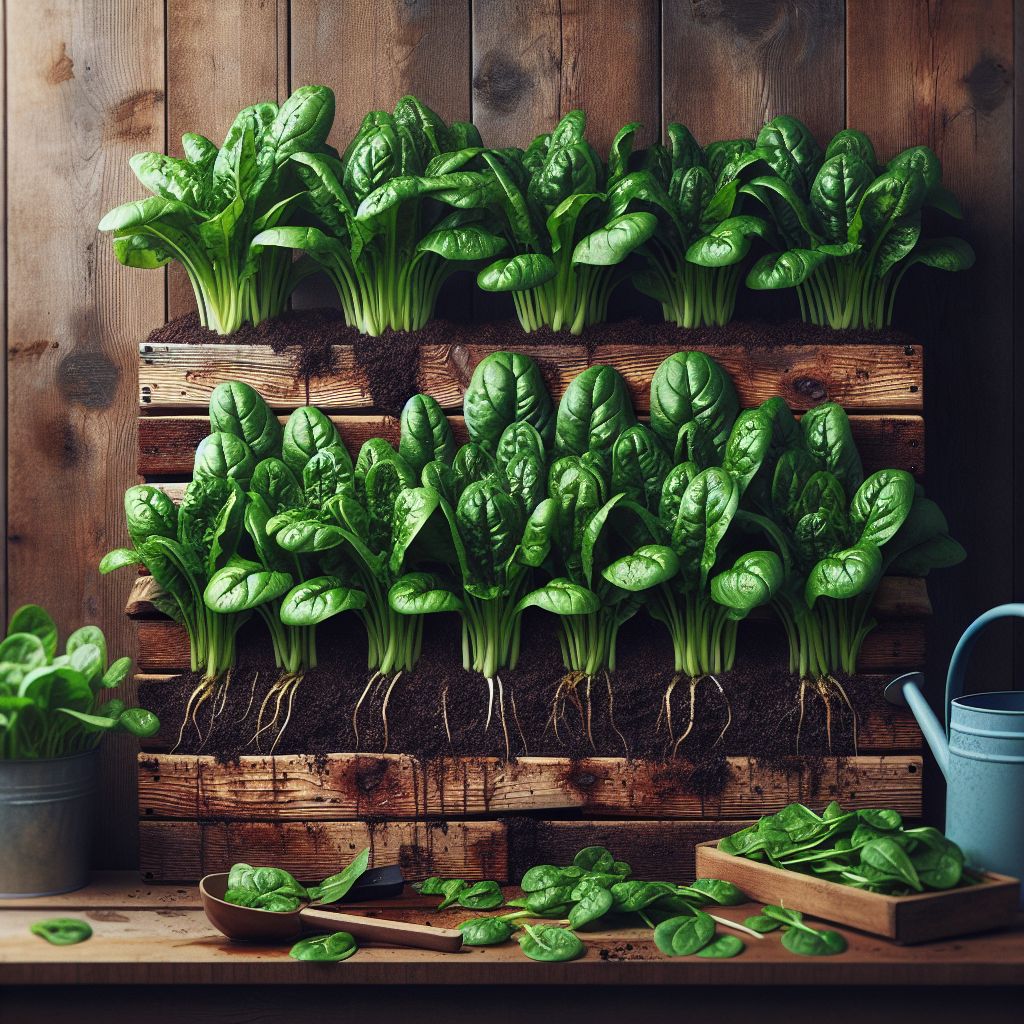
Imagine plucking fresh, vibrant spinach leaves right from your kitchen wall. No need for a backyard or even a balcony – just a little bit of vertical space. That’s the magic of indoor vertical spinach gardening. It’s a game-changer for urban dwellers craving homegrown produce. Besides that, it’s a fun, engaging way to add a splash of green to your living space.
The Space-Saving Wonder of Vertical Gardens
Living in the city often means making the most of limited space. That’s why vertical gardens are such a smart choice. They use vertical space, which is often underutilized, allowing you to grow more in less area. Moreover, a vertical spinach garden wall is not just practical; it’s a living piece of art that brings life to any room.
Vibrant Spinach All Year Round in Your Home
One of the best parts about growing spinach vertically indoors is that you can enjoy this leafy green all year round. No need to worry about frost or scorching summer heat. With the right setup, you’ll have a steady supply of fresh spinach, whether it’s December or July.
Choosing the Right Kit to Get Started
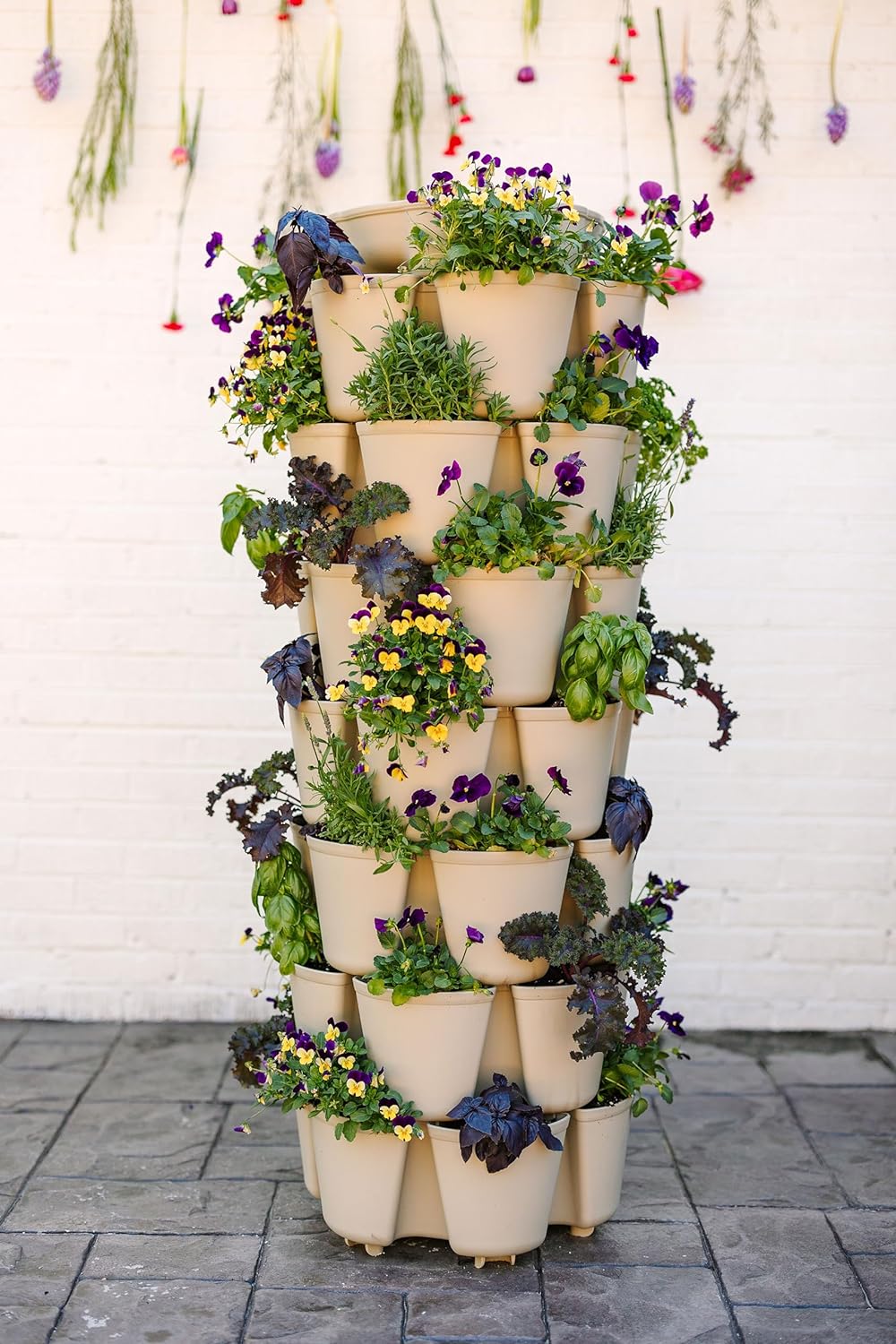
Now, you might be thinking, “This sounds great, but where do I start?” The first step is selecting a vertical gardening kit that suits your needs. It’s essential to choose one that’s user-friendly, especially if you’re new to the gardening scene.
Must-Have Features in a Vertical Gardening Kit
-
Simple assembly – you want to get growing, not fumbling with complicated instructions.
-
Durable materials – to ensure your garden wall stands the test of time.
-
Good drainage – to prevent waterlogged roots and unhappy plants.
-
Easy access to plants – for fuss-free planting, caring, and harvesting.
These features will make your gardening experience enjoyable rather than frustrating. Remember, the goal is to grow spinach, not stress!
Top Picks for Reliable and Easy-to-Use Kits
When it comes to vertical gardening kits, there are a few options that stand out. One such option is the GreenStalk Vertical Garden Planter. It’s known for its ease of assembly and space-efficient design. But for those looking to start with something even simpler, you might consider the AmazonBasics model, which offers a straightforward setup and is perfect for beginners. For a deeper dive into the world of vertical gardening, you might want to explore an introduction to growing upwards. You can check out the AmazonBasics model here and see if it’s the right fit for your kitchen garden wall.
Setting Up Your Vertical Spinach Garden Wall
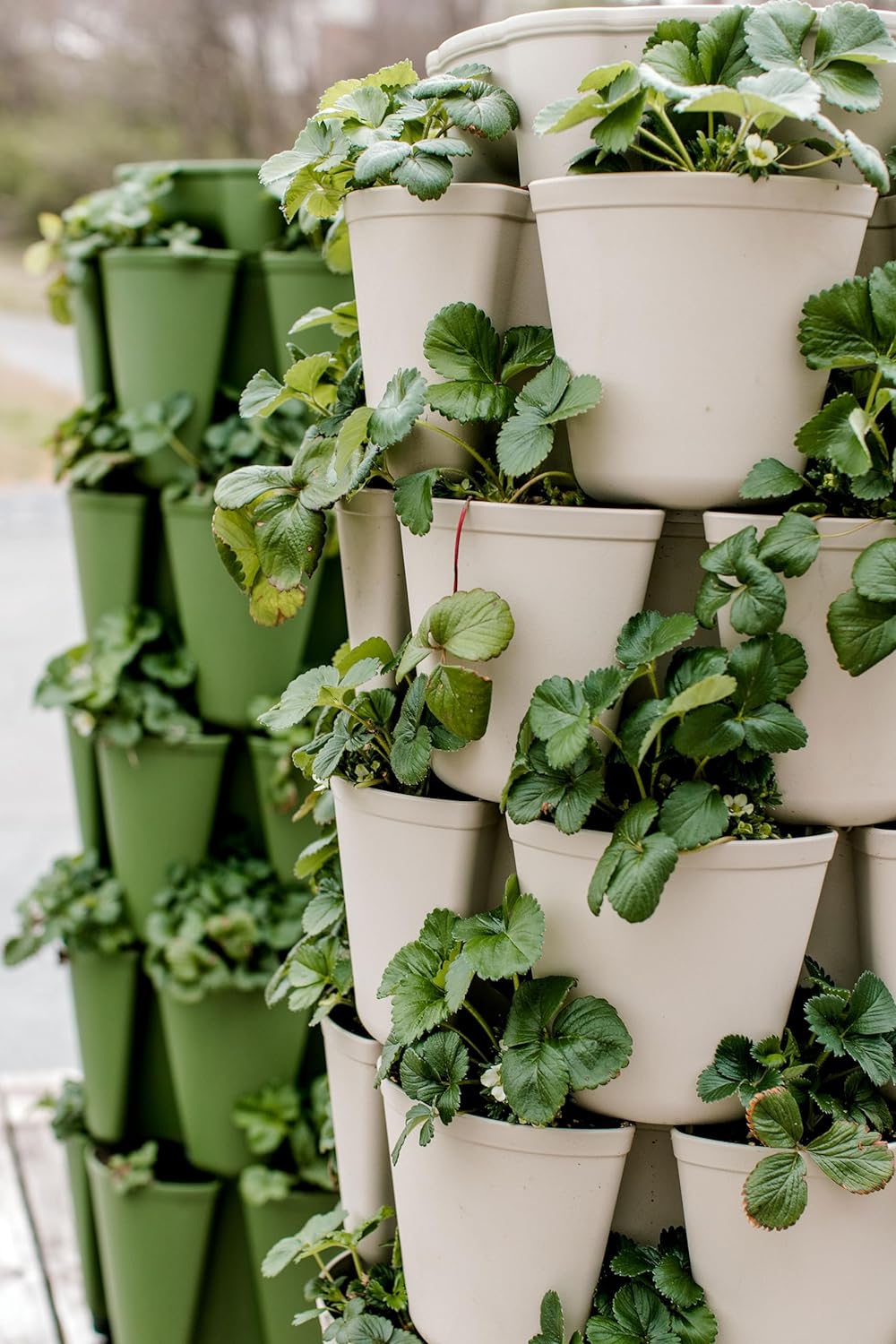
Once you’ve chosen your kit, it’s time to set it up. Don’t worry, I’ll guide you through every step of the way.
Finding the Ideal Spot in Your Kitchen
The best spot for your vertical garden is one that receives plenty of natural light. Spinach loves light, and the more it gets, the more it grows. A south-facing window is ideal, but any spot that gets at least 4-6 hours of sunlight will do. Just make sure it’s a spot you can easily access for watering and harvesting.
Next, you’ll want to make sure your floor can handle any water that might escape from the garden. A waterproof mat or tray underneath your setup can save you from a wet mess.
Assembling Your Vertical Garden: Step-by-Step Guide
Assembling your vertical garden is a breeze, especially if you’ve chosen one of the user-friendly kits mentioned earlier. Here’s a quick rundown:
-
Unbox and lay out all the parts.
-
Start with the base and work your way up, stacking the tiers as directed.
-
Ensure each tier is securely in place before adding the next.
-
Once assembled, fill each tier with a high-quality potting mix, leaving some space at the top for planting.
And just like that, you’re ready to plant your spinach!
Planting Your Spinach for Success
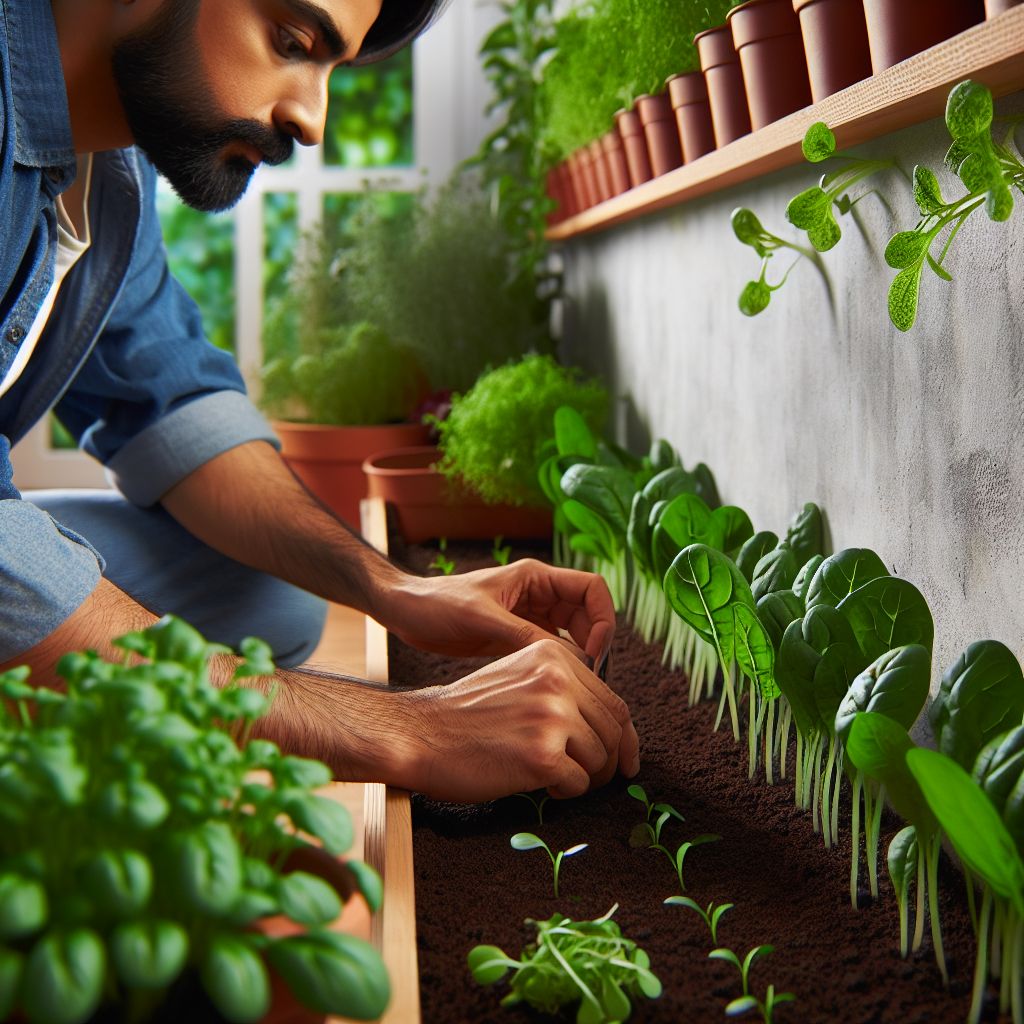
With your vertical garden assembled and stationed in the perfect spot, it’s time to plant. Spinach is a hardy plant that doesn’t ask for much. A little care goes a long way, and before you know it, you’ll be harvesting leaves for your salads and smoothies.
Choosing the Best Spinach Variety for Vertical Gardening
There are several spinach varieties out there, but not all are created equal when it comes to vertical gardening. You want a variety that’s compact and can handle the close quarters of a vertical setup. ‘Space’ and ‘Baby’s Leaf’ are two varieties that thrive in these conditions. They’re known for their smooth leaves, quick growth, and mild flavor.
Most importantly, these varieties are resistant to bolting, which is when a plant starts to flower and seed prematurely, often due to warm temperatures. Bolting can make the leaves taste bitter, so a bolt-resistant variety is a plus for indoor gardens where temperatures can vary.
Germinating Seeds or Starting with Seedlings?
When starting your garden, you have two choices: germinate seeds or begin with seedlings. For beginners, I recommend starting with seedlings. They’re easier to handle and you’ll see results faster, which is always encouraging. If you’re feeling adventurous, germinating seeds isn’t difficult. Just make sure to keep the soil moist and give them plenty of light.
Caring for Your Vertical Spinach Garden
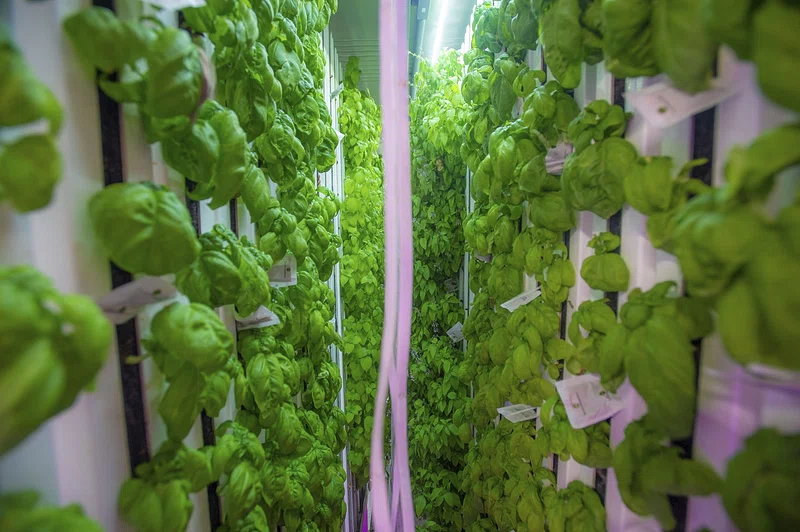
“Urban Gardening: The Future of City …” from plantly.io and used with no modifications.
Spinach isn’t demanding, but it does need consistent care. Let’s dive into the essentials for keeping your spinach happy and healthy.
Watering Techniques for Optimal Growth
Watering is crucial in vertical gardening because the soil dries out faster. The key is to water regularly and thoroughly. Your spinach should get enough water so that it reaches the roots, but not so much that the soil becomes soggy. An easy way to check is to stick your finger into the soil; if it’s dry an inch below the surface, it’s time to water.
-
Check soil moisture daily, especially in warm conditions.
-
Water in the morning to reduce evaporation and give plants time to absorb it.
-
Use a watering can with a long spout to target the base of the plants and avoid wetting the leaves, which can lead to disease.
By following these tips, you’ll ensure your spinach has the hydration it needs to grow strong and healthy.
Nutrient Requirements and pH Balancing
Spinach loves nutrient-rich soil. A balanced, water-soluble fertilizer every couple of weeks will do wonders. As for pH, spinach prefers slightly alkaline soil, around 7.0 to 7.5. You can easily test your soil’s pH with a kit from your local garden store.
“Consistency is key in gardening. Regular feeding and pH checks can make the difference between a good harvest and a great one.”
If the pH isn’t quite right, don’t fret. Adjusting it is straightforward: add garden lime to increase the pH, or sulfur to decrease it. Just follow the instructions on the package for the best results.
Harvesting and Enjoying Your Spinach

The moment you’ve been waiting for: harvest time. When the leaves look big enough to eat, they’re ready. But don’t go pulling out the whole plant! Harvesting the right way will encourage more growth.
Knowing When and How to Harvest for Peak Freshness
For the freshest taste, harvest in the morning when the leaves are most hydrated. Cut the outer leaves first, about an inch from the base. This method allows the inner leaves to continue growing, giving you multiple harvests from the same plant. And remember, the more you harvest, the more your spinach will grow.
Now go ahead, make that spinach salad you’ve been dreaming of, or add a handful of leaves to your morning smoothie. You’ve earned it with your green thumb and dedication to your vertical kitchen garden wall.
Rotating Crops for Continuous Produce
Keeping your vertical garden productive means thinking ahead. Rotating your crops is a smart strategy to maintain soil health and prevent pests and diseases. Once you’ve harvested your spinach, consider planting a different type of leafy green, like kale or lettuce. This keeps the soil from becoming depleted of specific nutrients and breaks the life cycle of any pests that may have taken a liking to your spinach.
Winterizing Your Vertical Garden for Year-Round Enjoyment
When the colder months approach, don’t think your vertical garden has to go into hibernation. Winterizing your setup can be as simple as moving it to a warmer spot or adding a grow light. Insulating the back of your garden wall with a reflective material can also help retain heat. These steps ensure that your spinach gets the right conditions it needs to thrive, even when it’s snowing outside.
Purchase Your Vertical Planter Today
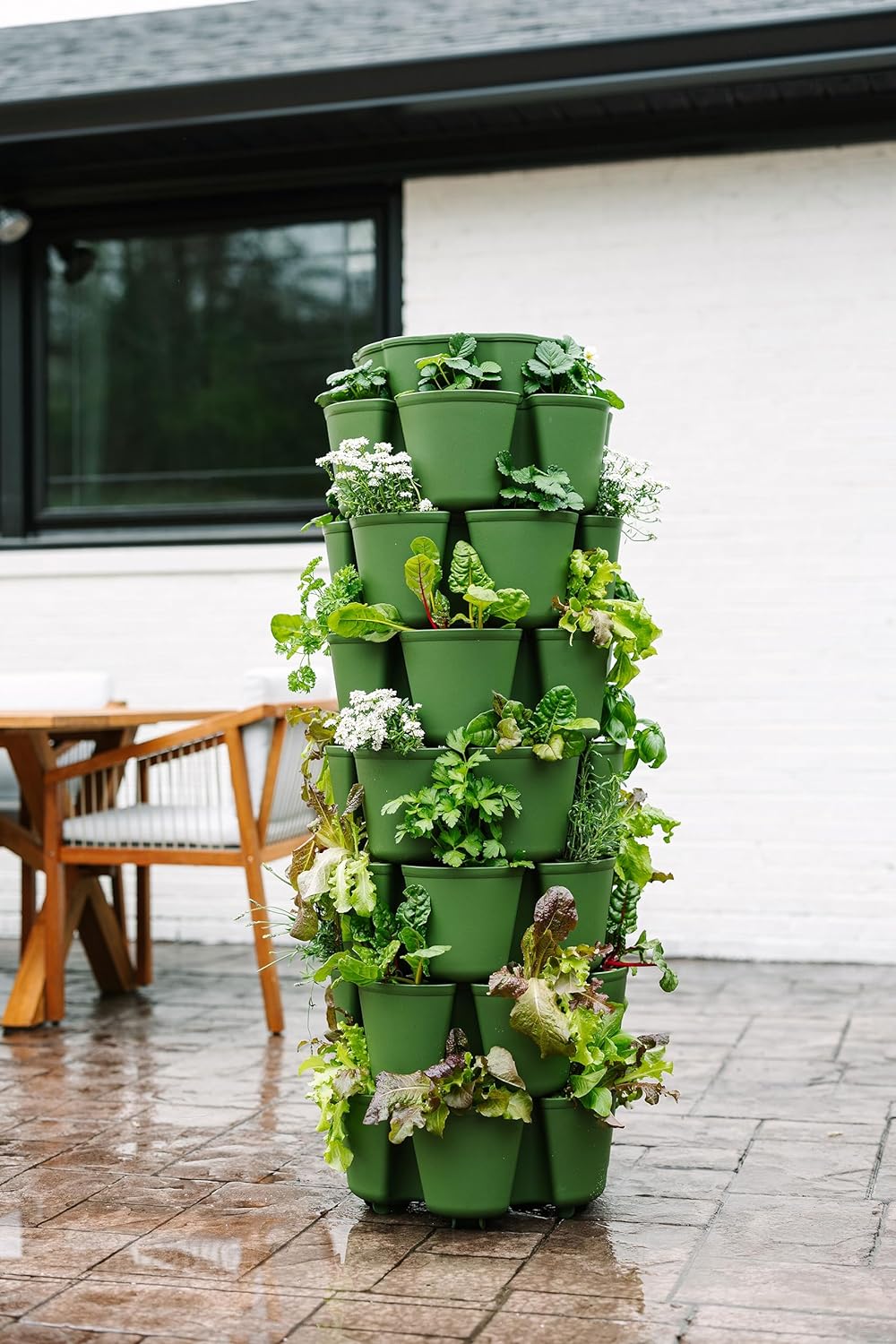
Ready to start your vertical garden? A 7-Tier Stackable Vertical Planter is an excellent choice. It’s space-efficient, easy to assemble, and perfect for a variety of plants, from flowers to edibles. With its sleek design and durable construction, this planter will help you make the most of your space.
To get your hands on this versatile planter, simply click here. It’s an investment in your urban gardening journey that you won’t regret.
Frequently Asked Questions (FAQs)

Got questions about vertical gardening? You’re not alone. Here are some common queries from fellow urban gardeners:
Can I Grow Other Vegetables on the Same Wall?
Yes, you can grow a variety of vegetables on your vertical garden wall, as long as they have similar light and water requirements as spinach. Herbs, lettuce, and swiss chard are all great companions for spinach.
How Often Should I Water My Vertical Spinach Garden?
Watering frequency depends on several factors, including the humidity of your environment and the stage of growth. A good rule of thumb is to water when the top inch of soil feels dry to the touch.
What’s the Best Spinach Variety for Indoor Gardens?
‘Space’ and ‘Baby’s Leaf’ are excellent choices for indoor gardens due to their compact growth habit and bolt resistance.
Do I Need Special Lighting for My Vertical Garden?
If your garden doesn’t receive enough natural light, you may need to supplement with grow lights. Aim for lights that mimic natural sunlight and can provide at least 4-6 hours of light per day.
How Can I Prevent Pests in My Indoor Vertical Garden?
Preventing pests starts with good hygiene. Keep your garden area clean, remove any dead or yellowing leaves promptly, and ensure good air circulation. If pests do appear, use organic pest control methods like neem oil or insecticidal soap.
By addressing these common concerns, you’ll be well on your way to maintaining a thriving indoor vertical spinach garden. Remember, the key to success is consistency and a bit of patience. Happy gardening!



